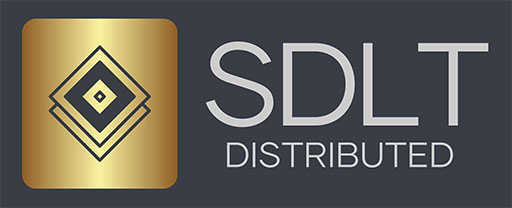
Data in motion: Unlocking the path to streamlined connectivity – The TRADE
Tim Lind, managing director and head of data services at The Depository Trust & Clearing Corporation (DTCC), explores how financial services firms can use technological innovations such as automation, artificial intelligence (AI) and distributed ledger technology (DLT) to transform the corporate actions data process and network.
The communication of corporate actions data to investors has been flawed for decades, stemming from manual, disparate processes that create operational fragmentation and friction between custodial agents and beneficial owners, leading to data inconsistencies within a critical data set.
 In today’s process, when an issuer initiates a new corporate actions event, it is distributed in various ways across a web of point-to-point connections using documents, email, financial messaging and web portals. A single event creates millions of discreet messages between banks and beneficial owners. Additionally, every bank has its own methods of communication and approach to how it presents corporate actions data in various formats.
In today’s process, when an issuer initiates a new corporate actions event, it is distributed in various ways across a web of point-to-point connections using documents, email, financial messaging and web portals. A single event creates millions of discreet messages between banks and beneficial owners. Additionally, every bank has its own methods of communication and approach to how it presents corporate actions data in various formats.
When this data is manually transferred, it unlocks the potential for distortion and inconsistency across a series of isolated interactions that are estimated to cost the industry billions of dollars annually, in avoidable fees. This nonstandard, manual and distributed approach introduces significant risk, making it difficult to detect and resolve anomalies before they cascade downstream.
For example, a single asset manager will receive multiple notifications for the same event from the custodian banks; however, each announcement slightly differs depending on how the information was translated. Then, each bank sends individual announcements and receives separate selections from asset management clients.
The current trading securities market structure has created multilateral platforms to consolidate orders that produce deep pools of liquidity and pricing data. The industry has yet to develop any multibank platforms where asset managers can share information, reconcile anomalies and fulfil transactions related to the corporate actions process.
The challenge is clear: We need to fundamentally rethink the fragmented process and consider how to create a common platform and network that will support consistent communication between asset managers and custodian banks. Automated platforms and emerging technologies offer a path forward to transforming the corporate actions data process and network – not only to enhance operational efficiency but also to enable new capabilities and value to ancillary functions beyond corporate actions operation, including trading, securities lending, portfolio valuation and index administration.
We must acknowledge that existing legacy and manual processes aren’t going to go away anytime soon. The first step in resolving fragmentation is to obtain correct event data and entitlements to eliminate redundant bilateral reconciliation. By introducing innovation to the corporate actions data process, stakeholders can gain access to accurate, real-time information while minimising resource requirements and maximising value.
Automated platforms boost connectivity and transparency and ensure the use of standards
Today, asset managers require an automated, centralised platform that is connected to a central securities depository (CSD) and fosters collaboration as well as connectivity among issuers and agents. The CSD is the digital voice of issuers, serving as the authoritative source of data that must help drive systematic changes to the asset servicing process.
This solution must deliver a seamless, standardised and uniform data flow that connects issuers directly to investors and intermediaries on a singular platform with one single source of truth. The benefits of a connected community include:
- Enhanced detection and resolution of data anomalies before they reach the broader market
- Increased transparency and accuracy of data for the buy-side, allowing investors and asset managers to access authoritative data directly from the CSD
- Reduction in bilateral data reconciliation
- Streamlined connectivity from the standardisation of data
Without this transformative shift, the industry will be unable to effectively manage risk, scale operations, connect with its network, or reduce the costs associated with manual and multiple point-to-point processes.
Emerging technology to unleash the power of data
It is important to note that emerging technology, such as artificial intelligence (AI) and distributed ledger technology (DLT), will also play a key role in reshaping the corporate actions event process. Already, AI is redesigning how data is captured, assessed and shared across the financial services industry.
By leveraging AI technology in the corporate actions process, what was once a corporate actions document that was manually opened, recorded and actioned can now be captured, interpreted and converted into structured data automatically, accelerating processes and improving accuracy.
AI is also suitable for detecting anomalies, inconsistencies and inaccuracies in the data, helping to enforce data standards. On the DLT side, smart contract technology offers untapped potential to embed business rules into message flows, reducing fragmentation and improving integration.
Looking ahead, the industry must rethink the corporate actions process. It is essential to remove point-to-point connections and deliver a network that ensures connectivity and access to common, accurate data for all.
We must leverage automation to accelerate processes and remove manual methods while embracing the power of emerging technologies to further optimise and enhance the corporate actions lifecycle. FMIs operate in an important part of the financial services ecosystem and are uniquely poised to deliver on this transformation with support and collaboration from key stakeholders across the industry.
Now is the time for all of us to align around a standardised platform and approach that modernises the corporate actions event data supply chain in order to deliver a more resilient, responsive, and interconnected financial ecosystem that best serves the evolving needs of a diverse and growing market.
